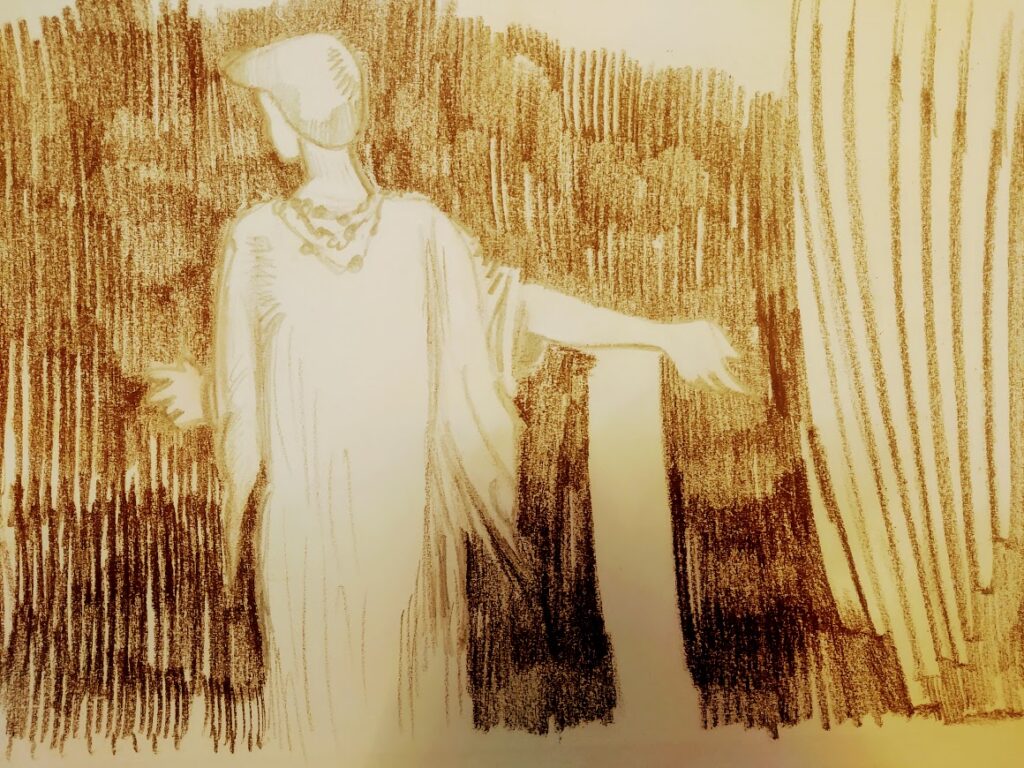Sleep paralysis is a phenomenon that manifests at the boundaries of wakefulness and sleep / Dr. Raz Even
Sleep paralysis is a phenomenon that manifests at the boundaries of wakefulness and sleep, characterized by a temporary inability to move or speak while transitioning into or out of sleep. This state is marked by the individual’s consciousness of their surroundings paired with a form of paralysis akin to the muscle atonia typically experienced during REM (Rapid Eye Movement) sleep, which prevents the enactment of dreams. Notably, sleep paralysis can also be accompanied by vivid hallucinations, categorized as hypnagogic when occurring before sleep and hypnopompic upon awakening. These hallucinations often include sensory experiences of sight, sound, and touch, such as seeing moving figures or feeling an oppressive weight on the chest, historically depicted in art and literature as demonic or supernatural encounters.
Despite its potentially frightening nature, sleep paralysis is generally considered benign, occurring sporadically in healthy individuals. However, it is more frequent among those with narcolepsy. Sleep paralysis can manifest intensely, provoking significant distress, characterized by feelings of entrapment in a liminal space between reality and imagination, with the afflicted unable to move or seek help despite being cognizant of their hallucinations.
The phenomenon has been linked to various factors, including the disjunction of dream components during wakefulness, such as paralysis and the generation of hallucinations. This aspect of sleep paralysis is of particular interest to scientists, as it provides insights into how the healthy human brain can produce hallucinations, thereby contributing to our understanding of similar phenomena in psychopathological conditions like psychosis and delirium.
The underpinnings of sleep paralysis are rooted in the brain’s mechanisms governing muscle atonia during REM sleep, as demonstrated by Michel Jouvet’s experiments in 1979. Jouvet’s work with cats, which involved disabling the brainstem areas responsible for sleep paralysis, revealed that the absence of this paralysis allowed the cats to physically act out their dreams, suggesting that muscle atonia during REM sleep serves to prevent the enactment of dreams, thereby safeguarding the sleeper from potential harm. This mechanism is believed to facilitate the processing of instincts and emotions in a safe environment, free from the constraints of physical reality.
Furthermore, sleep paralysis has historically been associated with other phenomena, such as out-of-body experiences and sensations of floating, which have been interpreted through mystical and supernatural lenses. The scientific exploration of sleep paralysis challenges these interpretations, proposing a neurological basis for these experiences and underscoring the complexity of the human brain’s function during different states of consciousness.
sleep paralysis represents a fascinating intersection of sleep physiology, neurology, and psychology, offering a window into the mechanisms of the sleeping brain and the boundaries between the conscious and unconscious mind. Its study not only illuminates the biological underpinnings of this common phenomenon but also enhances our understanding of human cognition, dream states, and the nature of consciousness itself.
The phenomenon of sleep paralysis provides a compelling glimpse into the complex interplay between consciousness and the physiological mechanisms of sleep. This state, which straddles the realms of wakefulness and sleep, is a manifestation of the brain’s intricate control over the body, particularly during the REM phase of sleep, which is characterized by vivid dreaming and muscle atonia. The temporary paralysis experienced during sleep paralysis reflects this protective mechanism, designed to prevent the physical enactment of dreams, ensuring the sleeper’s safety.
The occurrence of vivid hallucinations during sleep paralysis—hypnagogic as one falls asleep and hypnopompic upon awakening—further underscores the nuanced relationship between the brain’s perceptual and motor systems. These hallucinations, which can range from benign to intensely frightening experiences, serve as a testament to the brain’s powerful capacity for generating sensory perceptions in the absence of external stimuli. This aspect of sleep paralysis is particularly intriguing for its potential to mimic the hallucinatory experiences associated with certain psychopathological conditions, offering a naturalistic window into the study of hallucinations and their neural substrates.
Michel Jouvet’s foundational experiments with cats in the 1970s highlighted the biological necessity of REM-induced muscle atonia, revealing the potential consequences of its absence. These findings underscore the evolutionary significance of sleep paralysis as a mechanism to facilitate the safe processing of emotional and instinctual content during dreams. By inhibiting physical movement, the brain creates a virtual reality where scenarios can be played out, experiences can be simulated, and emotions can be processed without the risks associated with real-world interactions.
The association of sleep paralysis with phenomena such as out-of-body experiences and sensations of floating suggests a broader spectrum of consciousness experiences that occur at the interface of sleep and wakefulness. These experiences, often framed within supernatural or mystical contexts, are increasingly being understood through a scientific lens that acknowledges the brain’s capacity to generate complex perceptual states under specific conditions.
Sleep paralysis, therefore, represents more than just a peculiar quirk of sleep. It is a window into the profound capabilities of the human brain, offering insights into the nature of consciousness, the architecture of dream states, and the psychological underpinnings of our experience of reality. The scientific exploration of sleep paralysis challenges traditional interpretations of these experiences, advocating for a neurological understanding that respects the complexity and adaptability of the brain. Through this lens, sleep paralysis is not only a subject of scientific inquiry but also a reflection of the broader human experience, encapsulating the mysteries of the mind and the boundless landscapes of the human psyche.
The phenomenon of sleep paralysis has been extensively studied and documented across various cultures and scientific disciplines, offering a rich body of knowledge that spans neuropharmacology, cultural interpretations, and clinical management strategies.
Sleep paralysis is typically associated with the REM phase of sleep, characterized by muscle atonia which prevents movement in response to dreams. This state can result in a dissociation between perception and motor control if the individual achieves wakefulness, leading to the characteristic inability to move or speak. This condition has been linked with various factors, including narcolepsy, parasomnias, and sleep-wake disorders.
A systematic review exploring the lifetime prevalence rates of sleep paralysis highlights its commonality among the general population, with increased frequency observed in students and psychiatric patients. The condition can cause significant distress, notably when accompanied by vivid hallucinations and a sensation of pressure on the chest, often described in cultural lore as the “nightmare” or the incubus phenomenon.
Research into the neuropharmacology of sleep paralysis has pointed towards the serotonin 2A receptor’s role in the hallucinatory experiences associated with this condition, suggesting potential avenues for therapeutic intervention. Cultural interpretations vary widely, with some societies attributing sleep paralysis to supernatural causes or experiences, while others recognize it as a medical condition. This disparity underscores the importance of understanding sleep paralysis within both medical and cultural contexts.
The relationship between sleep paralysis and lucid dreaming has also been investigated, with studies indicating a significant correlation between the two phenomena. Both are connected to REM sleep but differ in emotional tone and perceived controllability. Furthermore, strategies for the prevention and disruption of isolated sleep paralysis episodes have been studied, though research in this area remains limited and calls for standardized methods of examination.
Additionally, the role of the right superior parietal lobe has been explored in relation to the “bedroom intruder” hallucinations experienced during sleep paralysis, suggesting a neurological basis for the phenomenon alongside the cultural constructions of these experiences.
This multidisciplinary exploration into sleep paralysis reveals it as a complex condition influenced by both biological mechanisms and cultural interpretations. It underscores the need for continued research to better understand its causes, manifestations, and treatment options within varied cultural contexts.

- Sharpless, B.A., & Barber, J.P. (2011). Lifetime prevalence rates of sleep paralysis: A systematic review. Sleep Medicine Reviews, 15(5), 311-315.
- Comment: This systematic review provides comprehensive data on the prevalence of sleep paralysis across different populations, offering a solid statistical foundation for discussions on its commonality and the demographic variations in its occurrence. Incorporating this reference can help underscore the widespread nature of sleep paralysis and its significance as a subject of scientific inquiry.
- Jalal, B., & Hinton, D.E. (2013). Rates and characteristics of sleep paralysis in the general population of Denmark and Egypt. Culture, Medicine, and Psychiatry, 37(3), 534-548.
- Comment: This comparative study between two culturally diverse populations offers insights into how cultural context influences the interpretation and experience of sleep paralysis. It supports discussions on the cultural dimensions of sleep paralysis, emphasizing the role of cultural narratives in shaping the phenomenological experience of this condition.
- Denis, D., French, C.C., & Gregory, A.M. (2018). A systematic review of variables associated with sleep paralysis. Sleep Medicine Reviews, 38, 141-157.
- Comment: This review identifies and analyzes various factors associated with sleep paralysis, including psychological stress, sleep quality, and lifestyle factors. It can provide a nuanced understanding of the potential triggers and risk factors for sleep paralysis, enriching discussions on its psychopathological and lifestyle-related aspects.
- Brooks, P.L., & Peever, J.H. (2012). Identification of the transmitter and receptor mechanisms responsible for REM sleep paralysis. Journal of Neuroscience, 32(29), 9785-9795.
- Comment: This research article delves into the neurobiological mechanisms underlying REM sleep paralysis, offering a detailed look at the specific neurotransmitters and neural pathways involved. It is crucial for discussions aiming to link sleep paralysis with its physiological underpinnings and the broader implications for understanding human sleep architecture.
- Cheyne, J.A. (2003). Sleep paralysis and the structure of waking-nightmare hallucinations. Dreaming, 13(3), 163-179.
- Comment: This paper explores the structure and content of hallucinations during sleep paralysis, providing a framework for understanding the nature of these vivid experiences. Including this reference will enrich your essay by offering a deeper exploration into the phenomenology of sleep paralysis, bridging the gap between subjective experiences and their neurological bases.


